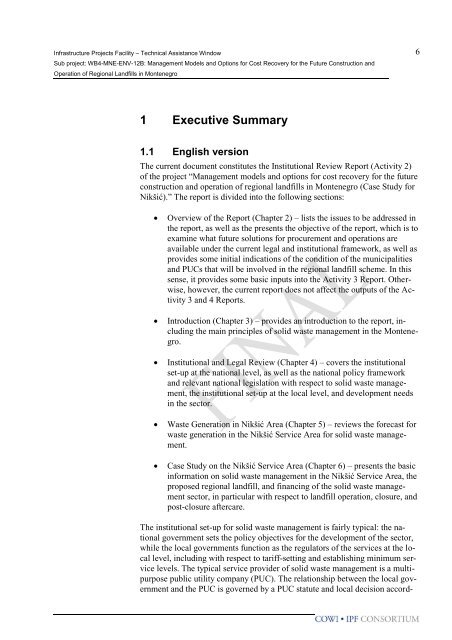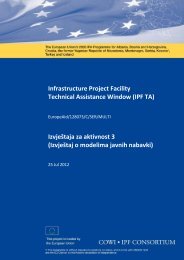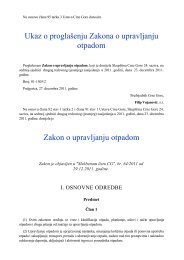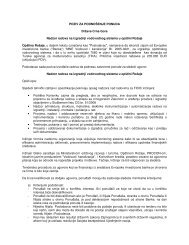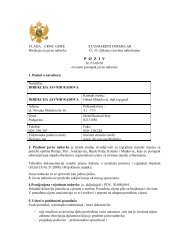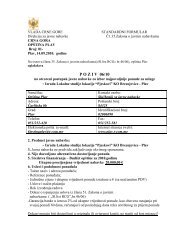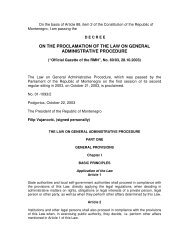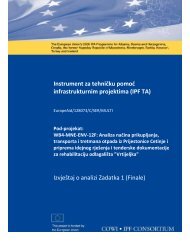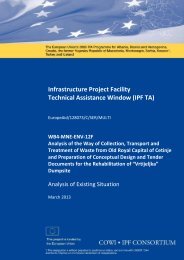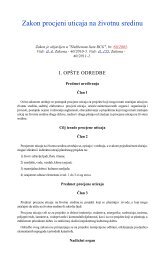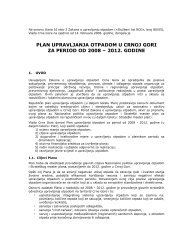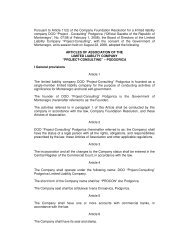Infrastructure Projects Facility Technical Assistance Window (IPF TA ...
Infrastructure Projects Facility Technical Assistance Window (IPF TA ...
Infrastructure Projects Facility Technical Assistance Window (IPF TA ...
You also want an ePaper? Increase the reach of your titles
YUMPU automatically turns print PDFs into web optimized ePapers that Google loves.
<strong>Infrastructure</strong> <strong>Projects</strong> <strong>Facility</strong> – <strong>Technical</strong> <strong>Assistance</strong> <strong>Window</strong><br />
Sub project: WB4-MNE-ENV-12B: Management Models and Options for Cost Recovery for the Future Construction and<br />
Operation of Regional Landfills in Montenegro<br />
6<br />
1 Executive Summary<br />
1.1 English version<br />
The current document constitutes the Institutional Review Report (Activity 2)<br />
of the project “Management models and options for cost recovery for the future<br />
construction and operation of regional landfills in Montenegro (Case Study for<br />
Nikšić).” The report is divided into the following sections:<br />
<br />
<br />
<br />
<br />
<br />
Overview of the Report (Chapter 2) – lists the issues to be addressed in<br />
the report, as well as the presents the objective of the report, which is to<br />
examine what future solutions for procurement and operations are<br />
available under the current legal and institutional framework, as well as<br />
provides some initial indications of the condition of the municipalities<br />
and PUCs that will be involved in the regional landfill scheme. In this<br />
sense, it provides some basic inputs into the Activity 3 Report. Otherwise,<br />
however, the current report does not affect the outputs of the Activity<br />
3 and 4 Reports.<br />
Introduction (Chapter 3) – provides an introduction to the report, including<br />
the main principles of solid waste management in the Montenegro.<br />
Institutional and Legal Review (Chapter 4) – covers the institutional<br />
set-up at the national level, as well as the national policy framework<br />
and relevant national legislation with respect to solid waste management,<br />
the institutional set-up at the local level, and development needs<br />
in the sector.<br />
Waste Generation in Nikšić Area (Chapter 5) – reviews the forecast for<br />
waste generation in the Nikšić Service Area for solid waste management.<br />
Case Study on the Nikšić Service Area (Chapter 6) – presents the basic<br />
information on solid waste management in the Nikšić Service Area, the<br />
proposed regional landfill, and financing of the solid waste management<br />
sector, in particular with respect to landfill operation, closure, and<br />
post-closure aftercare.<br />
The institutional set-up for solid waste management is fairly typical: the national<br />
government sets the policy objectives for the development of the sector,<br />
while the local governments function as the regulators of the services at the local<br />
level, including with respect to tariff-setting and establishing minimum service<br />
levels. The typical service provider of solid waste management is a multipurpose<br />
public utility company (PUC). The relationship between the local government<br />
and the PUC is governed by a PUC statute and local decision accord-<br />
.


